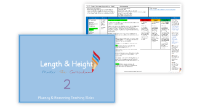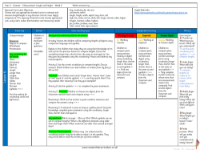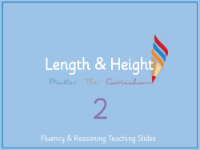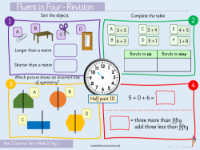Length and height - Comparing length - Worksheet
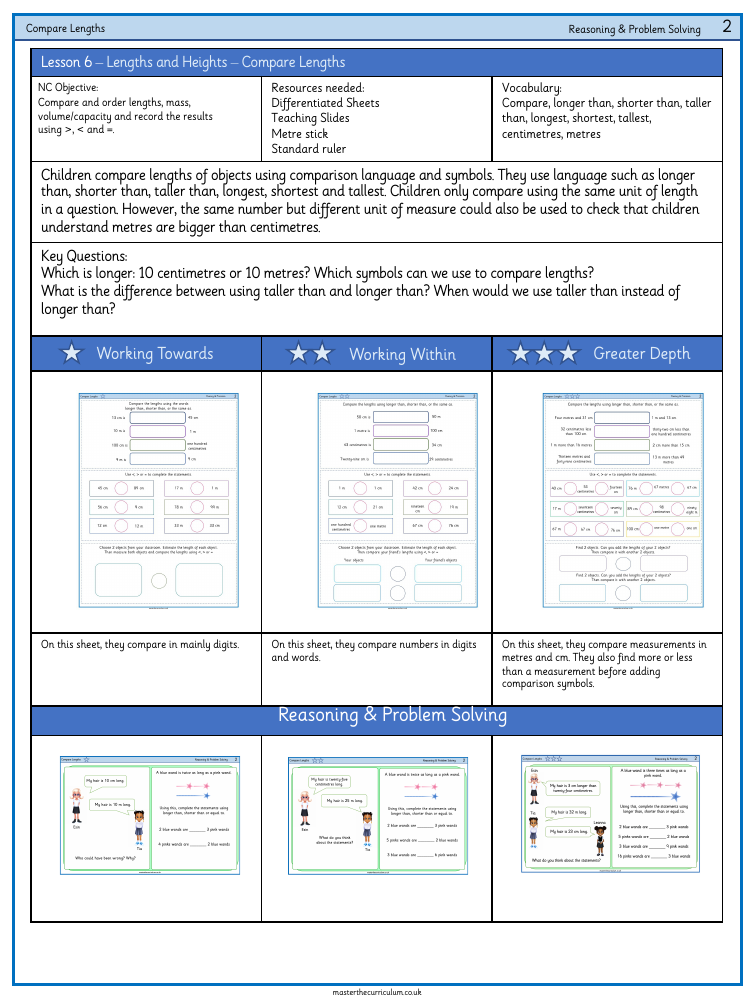
Maths Resource Description
The lesson on comparing lengths and heights is designed to help Year 6 students understand and use comparison language and symbols to order and record measurements. They are taught to compare objects using terms such as 'longer than', 'shorter than', and 'taller than', as well as using symbols like '>', '<', and '=' to denote greater than, less than, and equal to, respectively. The National Curriculum objective is for students to compare and order lengths, mass, volume/capacity, and record the results correctly. Resources for the lesson include differentiated worksheets, teaching slides, a metre stick, and a standard ruler. The vocabulary focuses on comparative and superlative adjectives related to size and length, and the units of measurement centimetres and metres.
Students engage with exercises that involve comparing lengths in digits and words, ensuring they understand that the same number in a different unit of measure implies a different size, with metres being larger than centimetres. Key questions challenge the students to think critically about the size comparisons they make, such as discerning the difference between 10 centimetres and 10 metres, and when to use terms like 'taller than' instead of 'longer than'. Practical activities include estimating and measuring the lengths of classroom objects, using comparison symbols to record their observations, and solving problems that require understanding the relationship between different units of measurement. The lesson aims to develop fluency, precision, and problem-solving skills in the context of measuring and comparing lengths.
